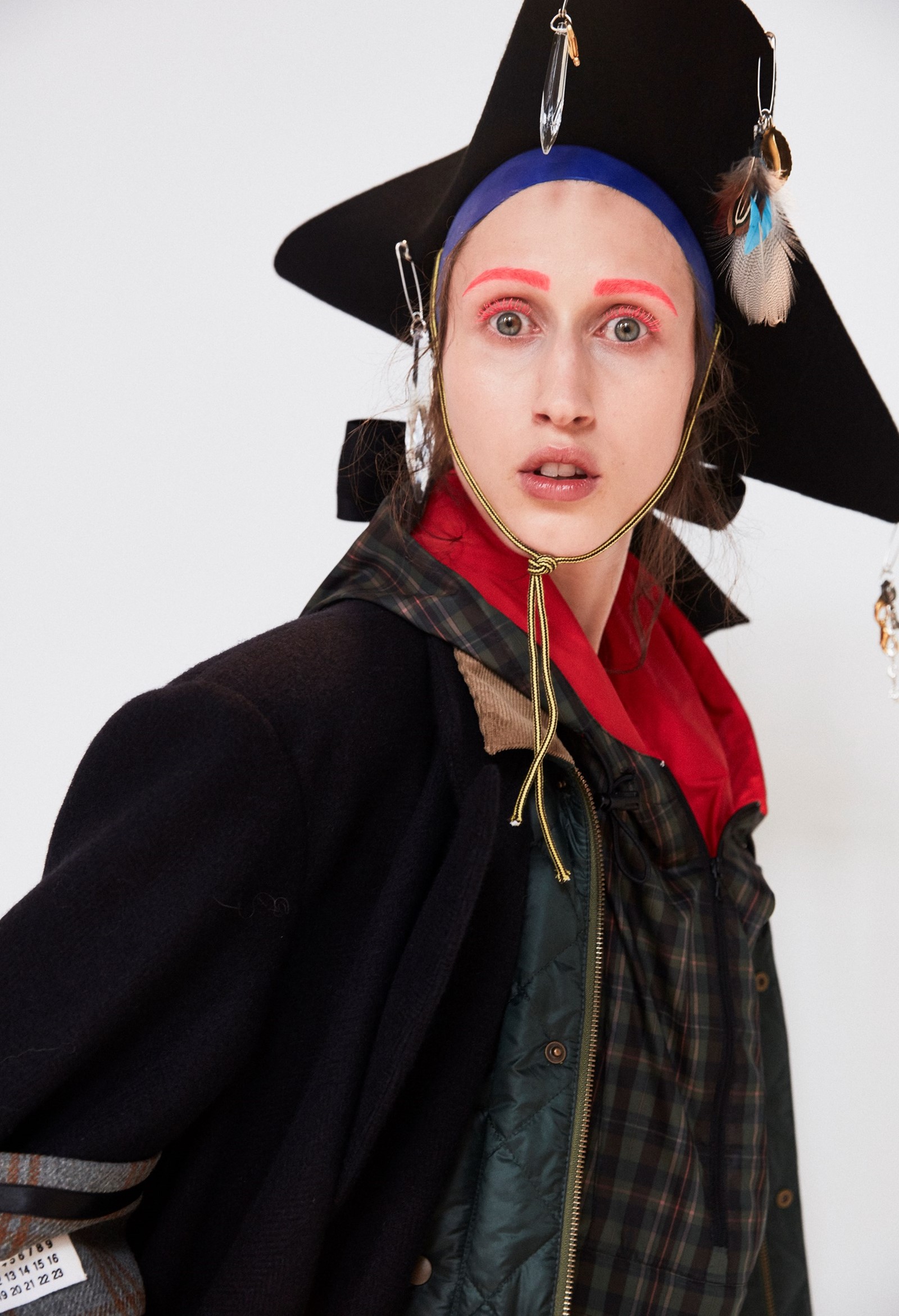On John Galliano’s moodboard in his Maison Margiela studio, a few days before his Autumn/Winter 2016 Artisanal collection, there are a series of heroic historical silhouettes pinned in sequence. A sans-culotte in tricorn and great-coat; a skirt poured out like the extended sword-pleats of a fraque; a profile of Josephine Bonaparte in empire-line dress. They were all pulled from Galliano’s A/W16 RTW Margiela collection – photoshopped down to black, stripped of modern fabrics and decoration, their illustrative line spoke of the past. Both the historical past, and Galliano’s own. “An attitude,” said Galliano, clad in the Maison’s signature white coat. “A feeling rooted in authenticity.” That was the urge.
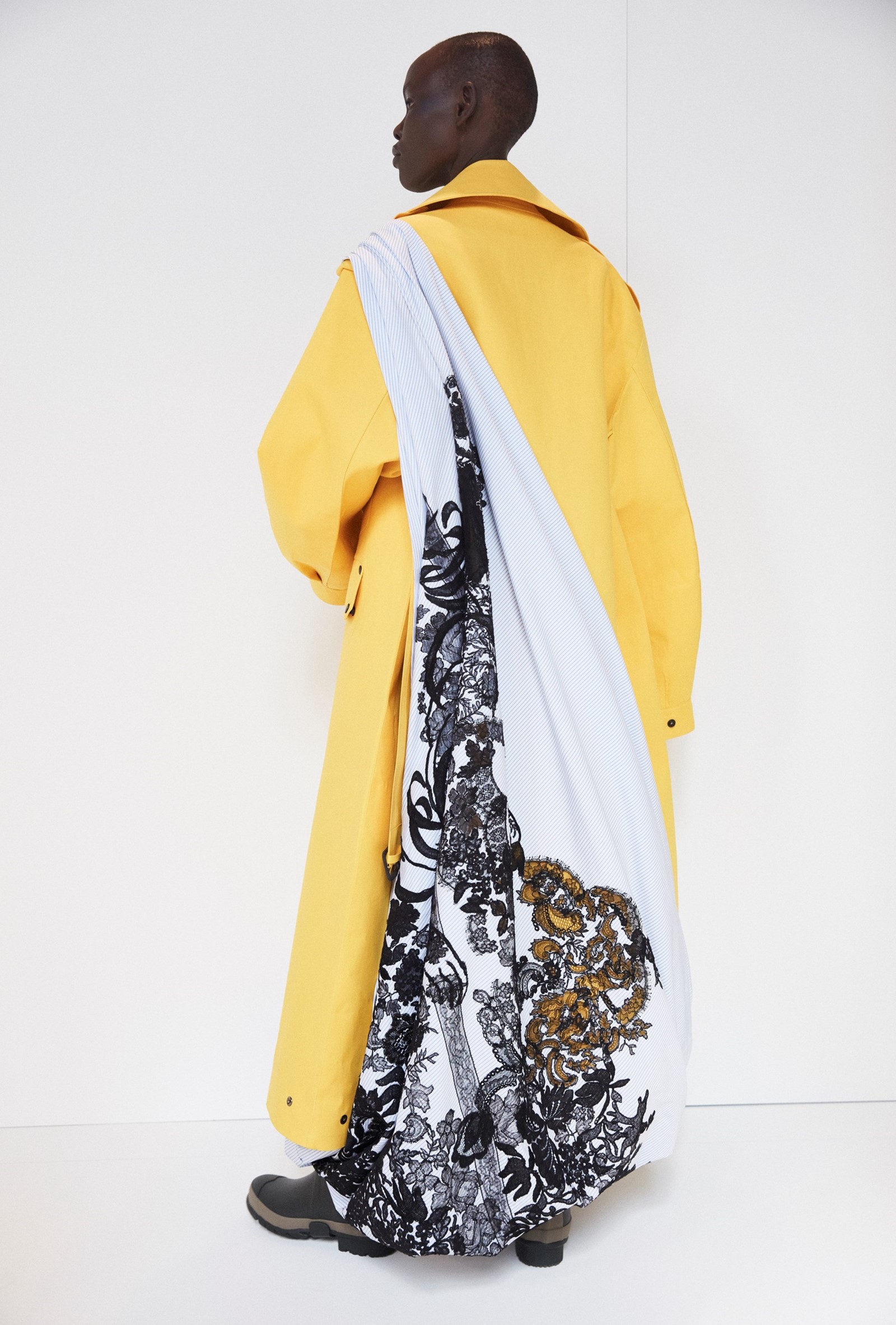
The designer acknowledged that, in both cases, the collection was a risk. History is something Margiela has always been interested in: but it tends to be things like facsimile reproductions of seventies clothes (the label’s “Replica” collections), or grotty, age-patinated clothes with a dressing-up box feel. Maybe they’re patched together from old army socks, or the lining of a dress is ripped out to become an evening gown. It’s not, normally, about resurrecting dandy rebels from the French revolution.
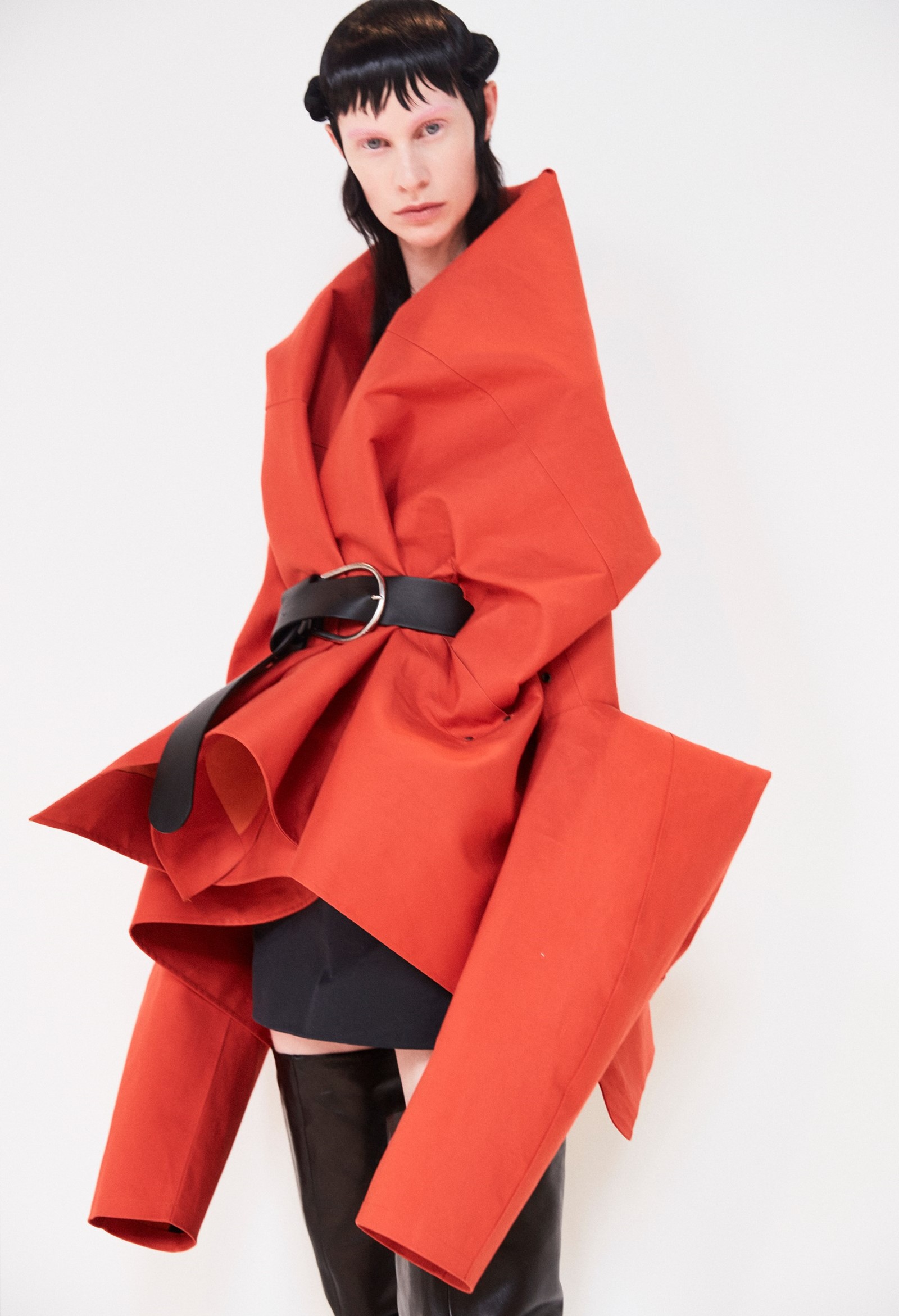
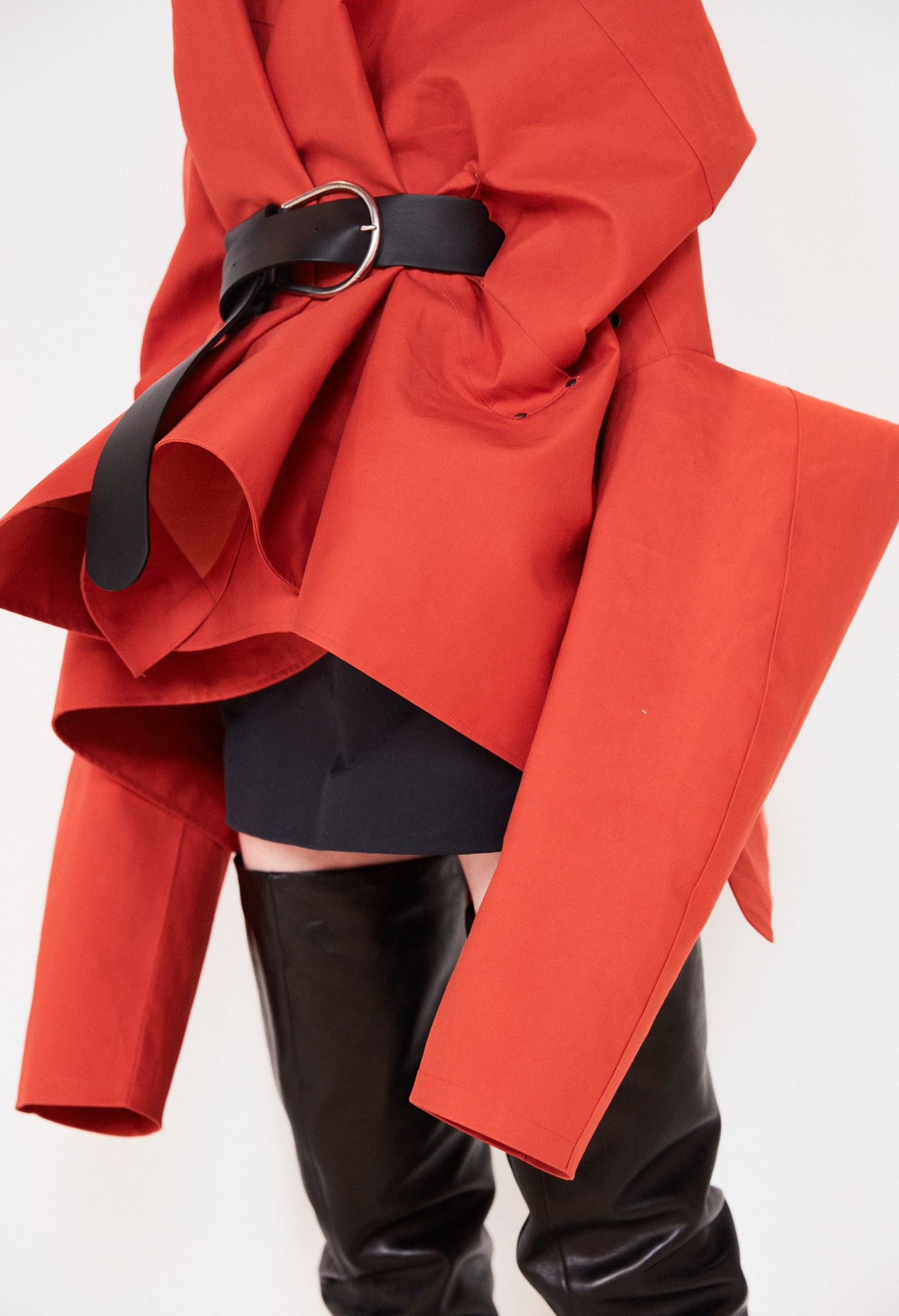
Galliano, of course, is all about that. “Les Incroyables” were the inspiration for his graduation collection in 1984, a bunch of aristocratic miscreants who outraged later 18th century Paris with their attire. A few seasons later, in a collection titled “Forgotten Innocents,” he showed models in diaphanous muslin dresses soaked to the skin, a direct reference to Les Merveilleuses, the Incroyables’ female counterparts. Those provocateurs used to parade, allegedly, in dampened dresses to emulate the clinging draperies of ancient Greek statues. It also created a spectacle of good old-fashioned nudity – the see-through red-carpet dress of their time. Although it came at a cost: damp or not, many wearers caught influenza, which was so linked to the flimsy fashion it became dubbed “Muslin Disease.” Margiela’s clothes were bone-dry for winter, but nevertheless the contemporary reincarnations of Les Incroyables et Merveilleuses stormed the Hôtel National des Invalides. Appropriately, it’s where Napoleon’s tomb lies.

The translation to today retains the shadowy silhouette of the past, but reinterprets it with a modern hand. There are some old tricks – the opening outfit was an upside-down caban coat, a reference to the topsy-turvy clothes of Galliano’s initial Incroyables. But he’d also rerun the silhouette in 1994, in the dusty salons of [Parisian socialite and collector of couture] Sao Schlumberger's mansion – Nadja Auermann wore a shearling coat with a vast collar, its form taken from a jacket worn upside-down, the hem thrown backwards to create a portrait collar. Upside-down, inside-out, proportions as pulled-out and distorted as a Gillray caricature, this was Galliano at full rebellious throttle. Tug out garments from the higgledy-piggledy pile-up, and you could appreciate their details – the inside-out “Biro” embroidery on a yak-hair coat, the scrappy lace cherubs pieced into poplin and mousseline dresses, the carved jewellery based on the handle of an Incroyable walking stick Galliano himself owned, brassieres of chandelier crystal, the edges painted with enamel like an illustration rather than reality. And there hyper-modern touches, of ripstop nylon clashing against harris tweed or bonded Barbour fabrics – what Galliano dubbed “sartorial,” and pointed to a print-out of Gainsbourough’s Mr and Mrs Andrews, by way of explanation. His modern re-interpretation? British Birds, a 2008 photograph by Nick Knight, which gave the collection its palette of heathery natural hues clashing with block primary.
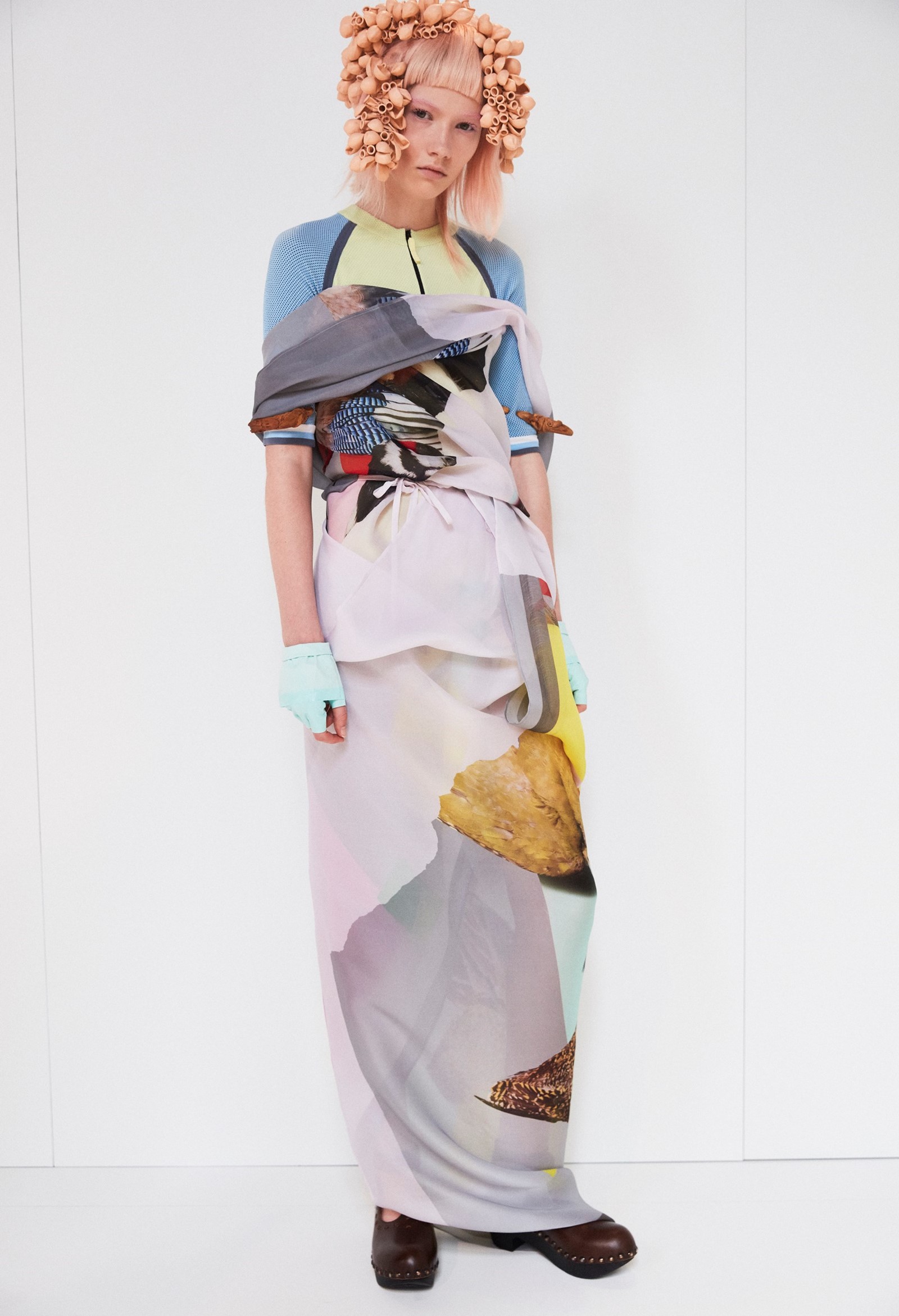

Somewhere, in those aristocratic agitators, Galliano found both himself, and Margiela, more succinctly and satisfactorily than ever before. Maybe it came from the clash of those rebels with their modern equivalents – skate culture, sharing studio space alongside the 18th century and combining easy, athletic silhouettes with the pizzaz of history. The scribbled embroidery, the hanging sleeves and misplaced garments, those struck you as much Margiela as Galliano – the Tabi-toe rubber boots, taken from Margiela’s original pattern, underscoring a link to the past not only far-flung and romantic, but of the house itself.
Attitude was what Galliano kept mentioning – and surely the attitude of those Incroyables and skaters key up with the anarchy inherent in Margiela, a maison who assailed the Bastille of eighties luxury and deconstructed it. The interesting thing this season was that Galliano refused to play by the rebel’s own rules.
